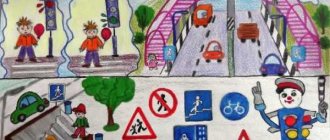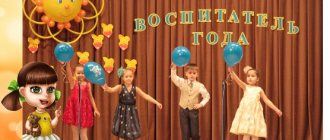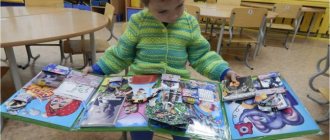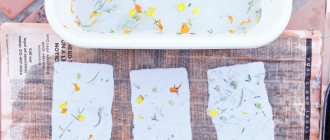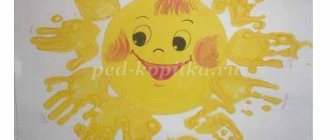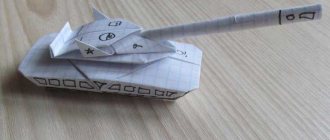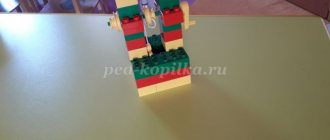Methodological recommendations for conducting a master class, presentation for a lesson on the topic
Slide 1
Guidelines
Slide 2
The concept of a master class A form of generalization and dissemination of teaching experience; An effective form of transfer of knowledge and skills, exchange of experience in training and education; A special form of educational lesson, which is based on the “practical” actions of showing and demonstrating a creative solution to a specific cognitive and problematic pedagogical task.
Slide 3
Objectives of the master class: Recreation by the master teacher in front of the participants of the master class of his own author’s model of the educational process (or other type of activity) in the mode of demonstrated pedagogical technology; Training master class participants in specific skills and ways to achieve the intended results; Demonstration of the ability of a master teacher to design the successful activities of students; Popularization of innovative ideas, author's discoveries of a master teacher.
Slide 4
Purpose of the master class: The main goal is to exchange experience with colleagues. Masters of their craft share with listeners some unique methodology that they personally used and successfully implemented.
Slide 5
The main principle of the master class is I know how to do it, and I will teach you
Slide 6
The methodology for conducting a master class does not have strict and uniform standards. For the most part, it is based on the intuition of the leading specialist and the receptivity of the listener.
Slide 7
Master class form Educator - group Educator - audience Educator - group - audience
Slide 8
In the technology of conducting a master class, the main thing is not to communicate and master information, but to convey methods of activity, be it a technique, method, technique or technology
Slide 9
When conducting a master class, the Master never strives to simply transfer knowledge, he tries to involve the participants in the process, to make them active.
Slide 10
Particular attention should be paid to: Speech and voice (tone, strength, expressiveness, diction, intonation, speech technique); Facial expressions, gestures, emotion management; Pantomime (posture, ability to stand, sit, observe the behavior of participants); Ability to concentrate on the subject of conversation, lack of constraint; The art of communication (psychological selectivity, ability for pedagogical attention, empathy); Pedagogical improvisation (the ability to work according to a plan “in your head”, draw on personal experience, manage unplanned situations); Psychological vigilance, the ability to identify “geniuses” and support “lagging behind”; Communication culture, ability to conduct dialogue, discussion; Sense of time.
Slide 11
Structure of the master class: Setting the goals and objectives of the master class; Transfer of the main elements of professional experience (in accordance with the stated topic); Practical development of acquired knowledge; Exchange of opinions, ideas; Summing up the master class.
Slide 12
Requirements for conducting a master class A master class must demonstrate a specific method. technique or method, teaching methodology, technology of training and education. The master class should consist of tasks that direct the activities of the participants to solve the posed pedagogical problem; Participants in the master class choose the path of research, choose the means to achieve the goal, and choose the pace of work.
Slide 13
The master teacher must have: Illustrative and methodological materials that allow participants and the jury to understand the essence of the experience being presented in a short time; Offering participants a diagram-algorithm or other elements-tips.
Slide 14
Technology for conducting a master class Presentation of the teacher’s pedagogical experience on a specific problem (updating, brief justification and description of the main ideas of the technology, method, etc.) Imitation game: the teacher-master conducts a fragment (element) of work with children on the audience, demonstrating the technology, method, etc. Modeling (bringing together students into small groups for independent activities to develop their own model in technology mode or the master’s method)
Slide 15
Technology for conducting a master class Presentation of the results of the groups’ work, their presentation with a report on the completion of the task. The result of joint activity is the demonstration by the participants of developments showing the possibility of accessible application of the master’s method in the practice of their own activities. A short final word from the master teacher.
Slide 16
A few tips: In the master class, it should be clearly visible what exactly the teacher represents (technique, method, technology). It is logical to mention and comment on where it is used and what results it gives. A master class should not be reduced to a lecture, but you should not play during the entire master class. During the master class, try to show off not only yourself, but also the participants of the master class. Don't be afraid to ask difficult questions. You shouldn’t spend a long time trying to get the answer to the question you need.
Slide 17
A few tips: Humor is almost always welcome. You can ask your colleagues to answer the question of what they could take from the master class to carry out their own teaching activities. Finally, thank the participants of your master class.
Slide 18
Good luck!!!
Master class by the teacher “MBDOU 13 Yoshkar-Ola “Klyukovka” Tanygina Irina Ivanovna. - presentation
Master class by Teacher “MBDOU 13 Yoshkar-Ola “Klyukovka” Tanygina Irina Ivanovna
All children love to draw. Very often, due to a lack of knowledge and technical skills in visual arts, a child loses interest in creativity. From experience working with children and developing artistic and creative abilities in drawing, we can say that standard sets of visual materials and techniques are not enough for modern children, since the level of mental development and potential of the new generation has become much higher. In the course of observations of the visual activities of children in kindergarten, we can conclude that the decrease in interest and motivation for creativity has several reasons: 1. Children lack the necessary knowledge, skills and technical skills in drawing; 2. Templates and monotony in the image and design of the drawing; 3. Insufficient knowledge about the world around us. Therefore, it is so important to turn to the use of non-traditional drawing techniques - they give impetus to the development of children's intelligence, imagination, fantasy, and force our children to think outside the box.
Development of creative abilities in preschool children through the use of the non-traditional drawing technique “Ebru”
Educational: To introduce preschoolers to the non-traditional drawing technique - “ebru”. Developmental: Develop fine motor skills; Develop a sense of composition, rhythm, color, color perception; a sense of texture and volume; Develop creative abilities, artistic creativity, imagination, fantasy, interest in visual arts; Develop a desire to experiment in drawing, showing vivid feelings and emotions: joy, surprise. Educational: Arouse interest in visual arts; Foster creative self-realization and individuality.
1. Children independently use non-traditional techniques at home; 2. Find non-standard ways of artistic depiction; 3. They know how to convey their feelings and emotions, and enjoy their work.
The art of “water painting” was passed on by masters from generation to generation. In recent decades, Ebru art in Turkey has received a new life: it is preserved, developed and brought to the masses. “Marble” images have been widely used since ancient times. The first mention refers to the magical rituals of shamans who used signs on water to predict fate. During excavations in Altai, scientists discovered fragments of leather decorated with a marble pattern, which is 4,500 years old. Glass bottles with distinctive designs dating back to 1365 BC have been found in Egypt. Ebru was first used to decorate paper in China. Images dating back to 800–1000 were discovered here. In the same years, works similar to ebru appeared in Japan under the names “suminagashi.” In China, the recipe for making paper and decorating it was kept secret for a long time. The secret was revealed only in the 8th century and quickly spread along the Silk Road. That is why the origin of Ebru is now attributed to India, Iran and other eastern countries. The Ottoman Turks adopted the almost forgotten art from the Persians, along with papermaking technology, and began to actively develop it.
Battal Ebru - spraying paint onto water with a brush and transferring the pattern onto paper. Ebru Shawl – repetition of S-shapes. Lightened Ebru is a blank for inscriptions. Ebru Comb - using a comb to create an ornament of waves and other repeating lines. Floral Ebru – image of flowers.
Only natural materials were used in Ebru. Brushes (“fyrchalar”). The main task of brushes is to absorb more paint and easily release it in the form of many small drops. For this purpose, traditionally and to this day, horse tail hair is used in ebru. The handle is traditionally made from the stem of a rose. Shilo (“without”). An awl is used to complete the design. The artist uses it to carefully move the paints across the surface so that the desired shapes are obtained. You can even paint portraits this way. Comb (“cockroach”). To obtain a “scaly” pattern, a comb is used, the length of which corresponds to the length or width of the pallet. This tool is great for filling space evenly with a design and for creating a background.
Ebru dyes include natural pigment, water and bile. They are very liquid in consistency, essentially colored water. The following insoluble pigments are used to make ebru paints: Yellow: a sulfur compound of natural arsenic. Blue: Lahore blue, which is obtained from the root of the plant. Green: a combination of blue and yellow. If there is a lot of arsenic, the color turns out closer to pistachio, if there is a lot of blue, closer to emerald. Dark blue: a special type of natural blue. Black: hand-harvested furnace black. Carbon black has long been used to make ink. This is the most difficult paint to prepare. It absorbs water very poorly due to soot. To facilitate this process, pine needles are added to the solution. White: lead carbonate (lead white) in its natural form. Red: Iron oxide from red cabbage leaves. All pigments are diluted ONLY with distilled water! The paints are infused for several days after dilution. Bile is a yellow-green liquid that has a rather unpleasant odor, but despite this, bile reduces the surface tension of water. (1 drop per teaspoon of a mixture of pigment and water), in the original bovine, you can replace it with fish.
Ebru is a drawing of one liquid on the surface of another. This is only possible if these liquids have different surface tensions. Therefore, the water on which the drawing will be done must be thickened. Heven plant extract is used as a thickener. This mountain thorn grows in Iran. In July, the plants are cut to collect the resin from its stem. Instead of heven extract, you can use thickeners from sea red algae, as well as the juice of the astralagus plant, which have low-adhesive properties.
For drawing you need viscous water: we made water from starch and water with the addition of office glue. Paints that do not dissolve in water: you can use oil paints, diluting them with a special solvent, or acrylic paints, diluting them with water to a liquid state. We will use gouache, adding water and office glue to it. A flat brush, an awl or a toothpick or a knitting needle, a comb, paper (it should be for painting with watercolors or thick, rough; very thin paper is not suitable, because it quickly absorbs liquid). The essence of this technique comes down to the fact that liquids have different densities and insoluble paints do not sink, they float on water and create a thin film.
1. Use a brush to create a background (pour paint onto the tip and shake it quietly into the water, tapping the brush on the finger of your left hand at a height of 5-6 cm from the surface). 2. Take an awl or a stick, put paint on the tip of the stick, and lightly touch the surface of the water (we can put several dots depending on what you plan)
Take a sheet of paper that matches the size of the tray, carefully place it on the surface and wait a few minutes until the edges begin to rise. We take the edges of the paper and lift it.
From the work done, we can come to the conclusion: the child needs the result that causes him joy, amazement, surprise. Drawing on water - EBRU - is not just applying paints to a certain surface, rather it is a whole philosophy. After all, Ebru is drawing, which is based on regular, natural forms, namely the circle. Every drop that falls into the water spreads into a circle, which we can transform into absolutely any desired shape. This kind of drawing perfectly develops children's imagination and thinking, and also gives the child the opportunity to feel like a real artist and get real satisfaction from creativity. The paintings always turn out unusual; every movement with an awl or brush creates a unique image. Oriental painting is an excellent way to develop a child’s motor skills, creativity and imagination. But not only children can benefit from ebru; adults will be able to get rid of stress and relax, leaving all problems outside the boundaries of the water surface.
